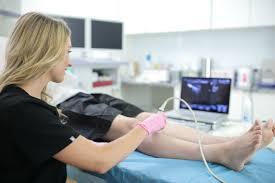vein doctor nyc have become an increasingly popular solution for those seeking to address issues like varicose veins, spider veins, and other venous conditions. However, the cost of these treatments can vary widely depending on a number of factors. In a city like New York, where healthcare services are known to be more expensive, understanding the elements that influence the price can help you make an informed decision.

One of the primary factors influencing vein treatment costs is the type of procedure. Common treatments include sclerotherapy, laser therapy, endovenous laser treatment (EVLT), and radiofrequency ablation. Each procedure has different complexities and equipment requirements, leading to varying costs. For instance, sclerotherapy, which involves injecting a solution into the affected veins, is generally less expensive than EVLT, which requires advanced laser technology. The price for sclerotherapy typically ranges from $300 to $800 per session, while more advanced treatments like EVLT can cost anywhere from $1,500 to $3,000 or more.
The severity and extent of the vein condition being treated also play a crucial role in determining the overall cost. Minor spider veins, for example, may only require a few sessions of sclerotherapy, resulting in lower costs. However, if you’re dealing with more extensive varicose veins or chronic venous insufficiency, you may need multiple treatment sessions or a combination of therapies, which can significantly increase the price. The larger and more complicated the veins, the more expensive the treatment tends to be.
In New York City, location is a significant factor in healthcare costs. Clinics located in upscale neighborhoods or renowned medical centers may charge more for vein treatments due to higher operating costs, such as rent, staff salaries, and advanced medical equipment. Additionally, the reputation of the clinic and its medical professionals can affect pricing. A board-certified vascular surgeon with decades of experience may charge more than a lesser-known provider. While this might raise costs, paying for expertise and advanced care can also result in better outcomes and a lower chance of complications.
In some cases, vein treatments may be covered by health insurance, particularly if the procedure is deemed medically necessary rather than cosmetic. Varicose veins that cause pain, swelling, or other medical complications are more likely to be covered. However, if the treatment is considered cosmetic, such as removing spider veins for aesthetic reasons, the costs will likely need to be paid out-of-pocket. It’s essential to consult with your healthcare provider and insurance company to determine if any portion of the treatment will be covered. Out-of-pocket costs can range from a few hundred dollars to several thousand, depending on the extent of the treatment.
In addition to the direct costs of the treatment, there are often additional fees to consider, such as consultation fees, follow-up appointments, compression stockings, and ultrasound examinations. These extra costs can add up, so it’s important to discuss all potential expenses with your provider before committing to a treatment plan.
Vein treatment costs in NYC are influenced by several factors, including the type of procedure, severity of the condition, clinic location, and whether the treatment is covered by insurance. Understanding these factors can help you plan financially and choose the best treatment option for your needs. While vein treatments can be expensive, especially in New York, the long-term benefits of improved comfort and appearance are often worth the investment.